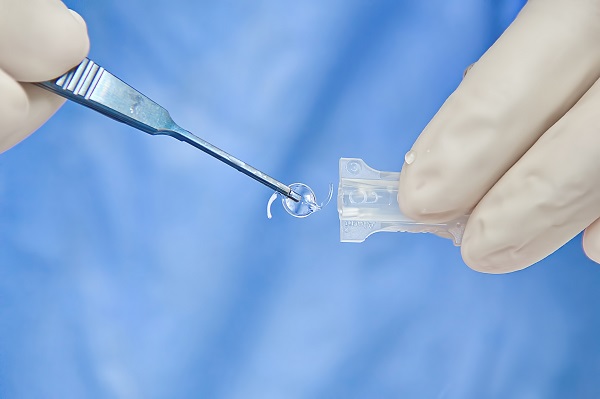By Brit Cooper-Jones
Our sight is such a key gateway to seeing and experiencing the world, and when a medical condition threatens our own or a loved one’s vision, it can be very distressing. This may be especially true for babies who are born with compromised vision, such as infants born with a condition called “aphakia.”
Aphakia refers to a condition in which the eye does not have a lens — the flexible structure that enables light to focus on the retina. Sometimes babies can be born without a lens because of a genetic defect (called “congenital aphakia”), but this is rare. “Noncongenital aphakia” is much more common. It is when the lens of the eye needs to be removed as a result of incidents such as trauma or, most commonly, because cataracts are causing clouded and impaired vision.
The conventional treatment for noncongenital aphakia in infants has been to correct the vision with glasses or contact lenses. However, there are some challenges associated with this treatment — the glasses are typically very thick and heavy, and the contact lenses can irritate the eye, cause infection, or be a hassle to use, all of which can lead to poor adherence.
To help mitigate these challenges, many children receive an artificial intraocular lens (IOL) that is surgically implanted as a replacement lens. However, the age at which IOL implantation occurs is variable, and multiple questions remain regarding the best treatment for aphakia, particularly when it comes to infants (defined here as babies under 12 months of age).
The first question is which treatment — IOL implantation or conventional treatment with glasses or contact lenses — leads to the best visual outcomes for infants? Then, the next questions are what is the comparative safety of the different treatment options (e.g., adverse events and/or the need for repeat procedures because of complications) and what is their comparative cost-effectiveness? Finally, it is important to look at the evidence on the optimal age for IOL implantation. That is, are there advantages and better outcomes associated with doing it sooner (i.e., in infants), or it is preferable to wait until patients are older (i.e., 1 to 12 years of age)?
To help answer these questions, health care decision-makers turned to CADTH — an independent agency that finds, assesses, and summarizes the research on drugs, medical devices, tests, and procedures. CADTH conducted a Health Technology Review that systematically reviewed the literature and identified a total of 18 studies on the questions of interest. These included 3 randomized controlled trials and 15 non-randomized studies. CADTH also engaged 2 family caregivers to provide family perspectives.
Overall, when compared with conventional treatment with glasses or contact lenses, IOL implantation does not appear to result in a greater improvement in visual outcomes in infants with aphakia. The overall incidence of adverse events (most notably, the need for additional surgeries due to complications) was higher in infants who received IOL implantation than in children aged 1 to 12 years. While the quality of the evidence was low overall, the studies concluded that there does not appear to be a benefit, from a clinical effectiveness or safety standpoint, to proceeding with IOL implantation in infants with aphakia (rather than offering conventional treatment or waiting to implant IOLs at a later age).
No cost-effectiveness studies were identified. This is an important limitation not only from a health care system funding perspective but also from a patient/family perspective. The cost to families of the IOL procedure was identified as a potential concern and barrier both in the literature and by the caregivers that CADTH engaged with. Equity concerns were also raised about the cost and accessibility of treatment, and this was noted as a useful area for future research.
When families and caregivers shared their perspectives on treatments for aphakia, they reported experiencing stress about the use of contact lenses as well as about the outcomes of IOL surgery, complication risks, and effects on the child. However, despite the stressors associated with each of the treatment options, families overall emphasized the importance of timely and effective treatment to ensure their child’s optimal development.
Overall, there does not appear to be strong evidence supporting early IOL implantation for infants with aphakia. For a more fulsome review of the evidence, see CADTH’s full report on the topic at cadth.ca/intraocular-lenses-infants-aphakia. If you’d like to learn more about CADTH, visit cadth.ca, follow us on Twitter @CADTH_ACMTS, or speak to a Liaison Officer in your region: cadth.ca/Liaison-Officers.
Brit Cooper Jones is a knowledge mobilization officer at CADTH.


